The Best Offense Is A Good Defense – African Shields
PRIMITIVE - Friday, June 12, 2015By Misaki Imagawa
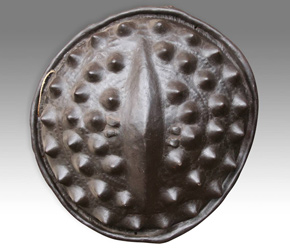 |
|
As the 19th turned to the 20th century, an Italian invasion force in northern Ethiopia hid under the cover of darkness. They were camped in an open steppe, strategically sound, except for a high plateau that rose sharply to the north. Nonetheless, they stirred uneasily at their posts. Scouts reported the area was secure, and that any hostile force would have to march all night and half the morning to surprise them from any direction. Still, it seemed in that hour a hush fell over the world. Even the chilling highland winds stopped blowing. Then they heard a loud knock; then another; and then one more. The first was so loud, guards and soldiers alike instinctively reached for their rifles. Others sounded far off in the distance. Soon the beats grew louder and faster, rousing sleeping soldiers and officers. Finally, it reached a thunderous crescendo of booms mingled with piercing cries. The Italians scrambled haphazardly, blind to the cause of their fear.
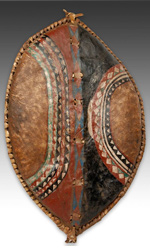 |
|
Warfare in Africa has existed as far back as recorded history and has been a major factor in shaping its regions and tribes. Yet, prior to the invention of modern weapons such as drones, planes, bombs, tanks, and gunpowder, war was understandably much different. In the past most African peoples fought with spears and shields; battles were up close and personal. Yet, they also utilized scare tactics designed to intimidate their adversary; much like when the Ethiopians confronted the Italians. The knocking noise made by the Ethiopians was the banging of their shields; the screaming was war cries. Though the Ethiopian fighters were largely outnumbered and lost many battles early on against the Europeans, they effectively struck fear into their would-be-colonizers; a fear that ate away at them until The Battle of Adwa where the invaders were finally defeated.
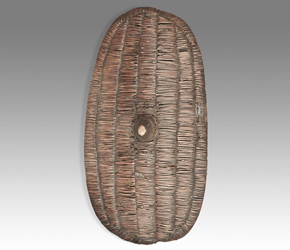 |
|
Although pistols and rifles gradually replaced traditional weapons, spears and shields are still regarded as highly valuable and meaningful objects to many African tribes. In particular, shields were never considered just a utilitarian item, but instead, a blend of functionality, fine art, identity and prestige. For example, Maasai shields from Kenya, made from buffalo hide stretched over a wooden frame, are beautifully painted objects; but every color and line has meaning. A shield with red paint, derived from a mix of earth and blood, indicates that it belonged to a senior warrior who had proven his courage and skills in combat. On the other hand, younger warriors were only allowed to use black, white and gray paints. Each pattern, known as sirata, symbolized certain aspects of Maasai life or culture. Today, those meanings have largely been lost, perhaps because shields are no longer used in actual combat.
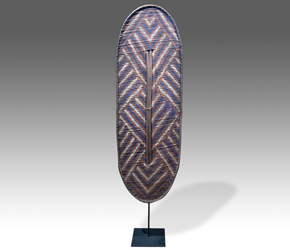 |
|
Identification was another function of shields. Most tribes had their own distinct designs and shield shapes. Consequently, they could be identified – even at great distances – by friend and foe alike. Round shields from Cameroon, made from wood were engraved with multiple parallel lines and then painted to create a decorative pattern that was both striking and unmistakable. In the Democratic Republic of Congo, shields were tall, oblong and made of wicker plaited tightly over wood. Differentiation between tribes was deduced from the smallest of details on each shield. In a sense, shields played similar roles to flags; however, unlike flags, shields were often danced during ceremonies to commemorate certain events. These events could be important battles in the past, warrior’s funerals, or many other ceremonies both governmental and personal. Shields might also be called an insignia, which was the case among the Maasai, who recognized rank from various patterns on their shields. This was also the case among the Ngandu people of Congo, the Ganda tribe of the Bantu speaking people in Tanzania, and also most tribes within Cameroon. In the modern military this sort of identification is done by insignia badges. It seems the workings of the military have changed far slower than the technology.
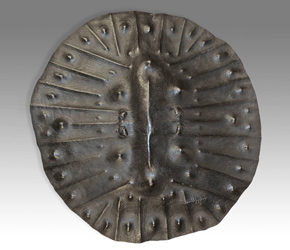 |
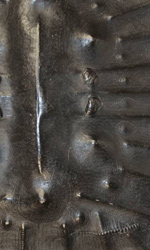 |
||
First and foremost, let us not forget shields were protective weaponry used in combat. The Oromo people of Ethiopia were renowned for their ferocity and bravery during battles and hunts. No doubt they played a valuable role when the Ethiopian army drove back the Italians. The Oromo had unique dark round shields made from thick hide, most often hippo or rhino. Once softened, usually by placing them in water for an extended period, they were then placed over wooden moulds to create convex indentations that transformed the surfaces into fierce looking patterns. They dried incredibly hard and durable. There are many historical accounts of shield-bearing African warriors generating awe and fear among their would-be captors and colonizers. For example, Arab slave traders went far out of their way to avoid the Maasai. The sight of their large, colorful shields approaching was the last thing they wanted to see on the horizon. The terrifying drumming of the Oromo shields was probably the last thing the Italians wanted to hear.
Shields may appear to be antiquated tools of war when one considers how technology has transformed warfare today. The remnants of antiquated technologies – like shields – were integral, essential elements for protection during most of humankind’s existence. In Africa, considered the cradle of civilization, it could be argued tribal shields have had a history at least as long as anywhere else in the world. This makes African shields notable examples of the art of war – and when viewed outside a historical context, distinguished examples of meaningful art.
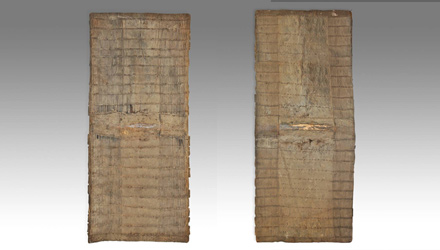 |
Download this Article: The Best Offense Is A Good Defense.pdf